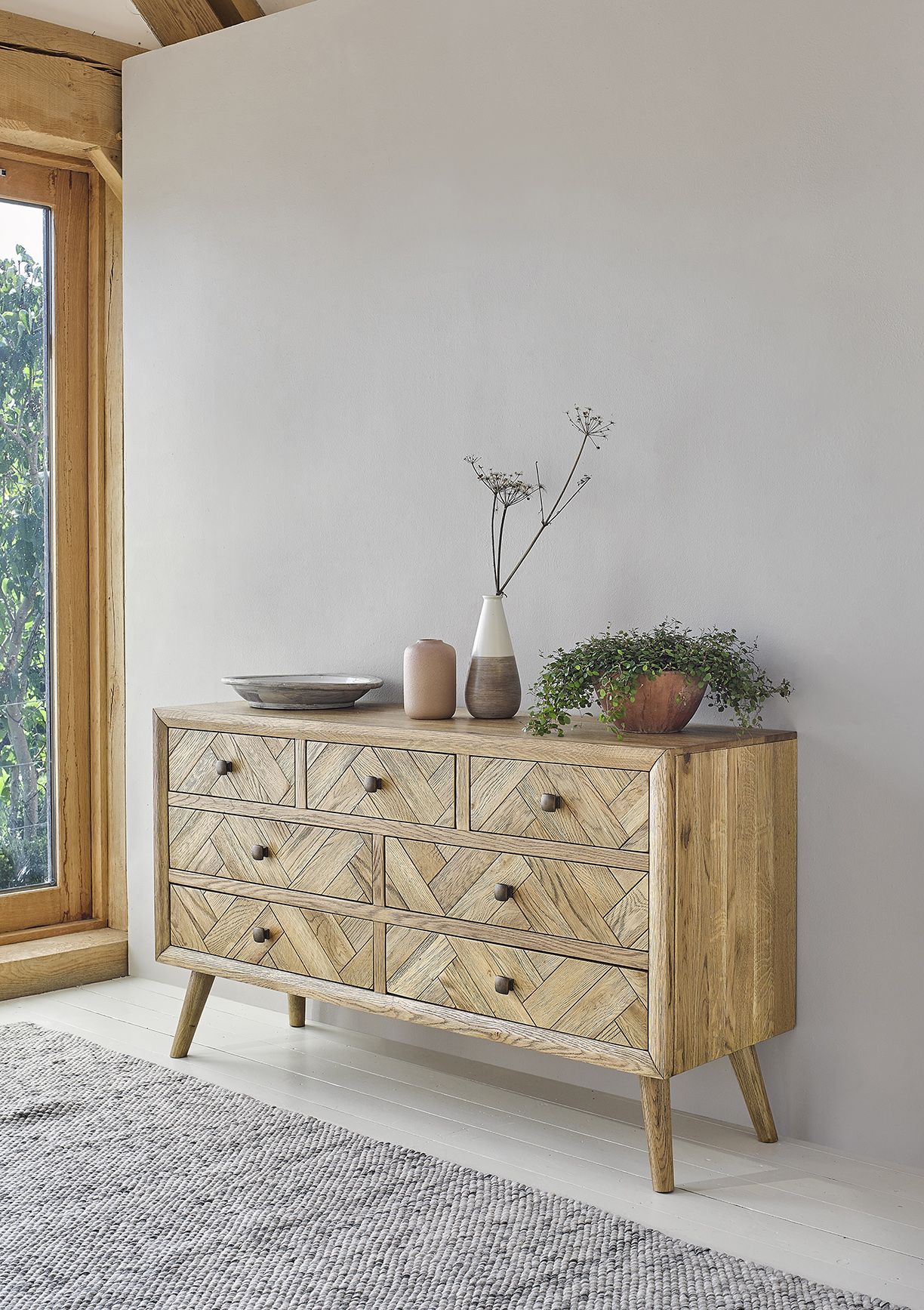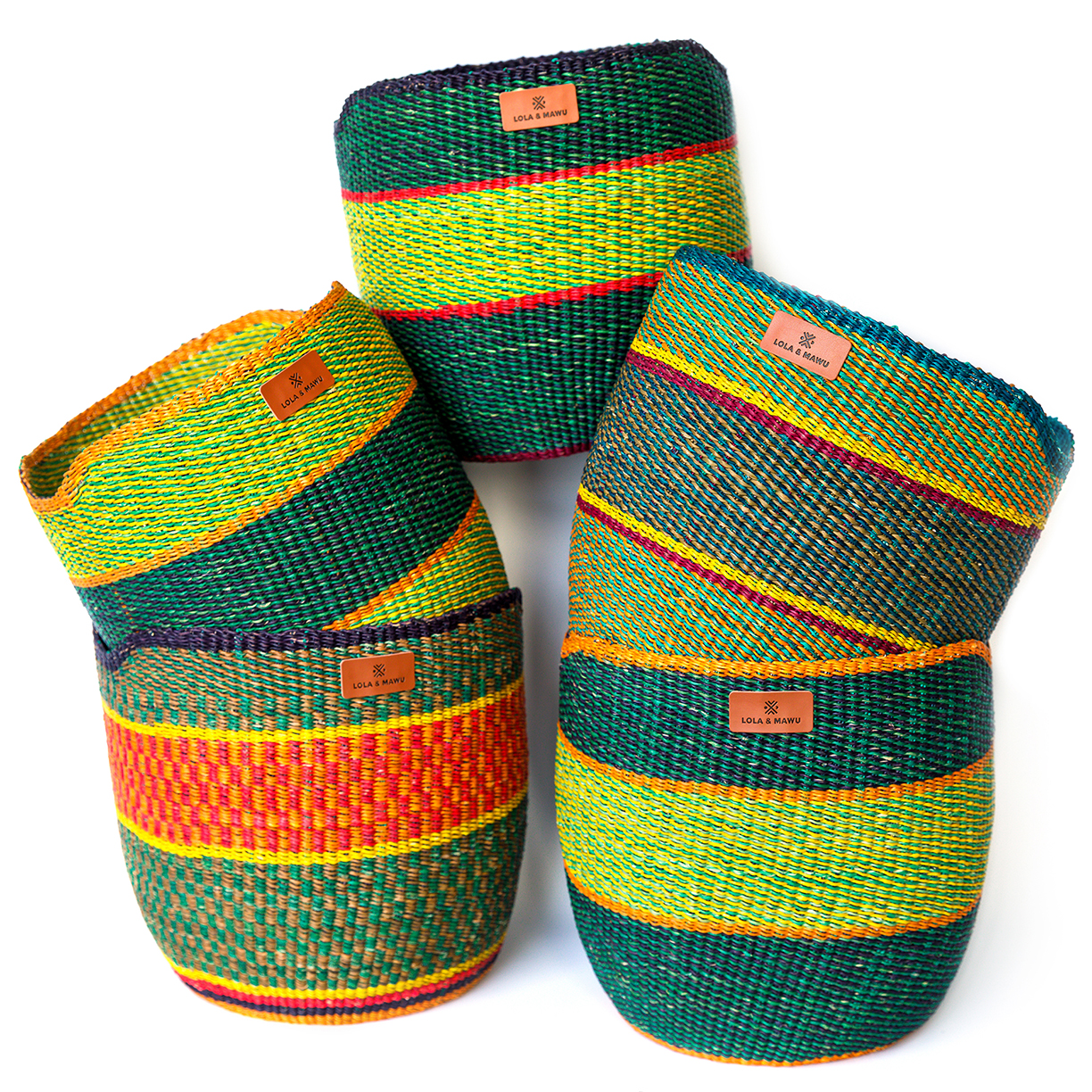Now is the time of year where people’s homes becomes the center for entertainment. Between the holiday get togethers and New Year celebrations, a home must be kept in party-ready shape. One room not to neglect: the guest room. Give this extra space a much-needed upgrade and create a memorable stay for guests, whether it be friends or family. Below are some tips to take a guest room from a drab bonus room to a five-star accommodation.
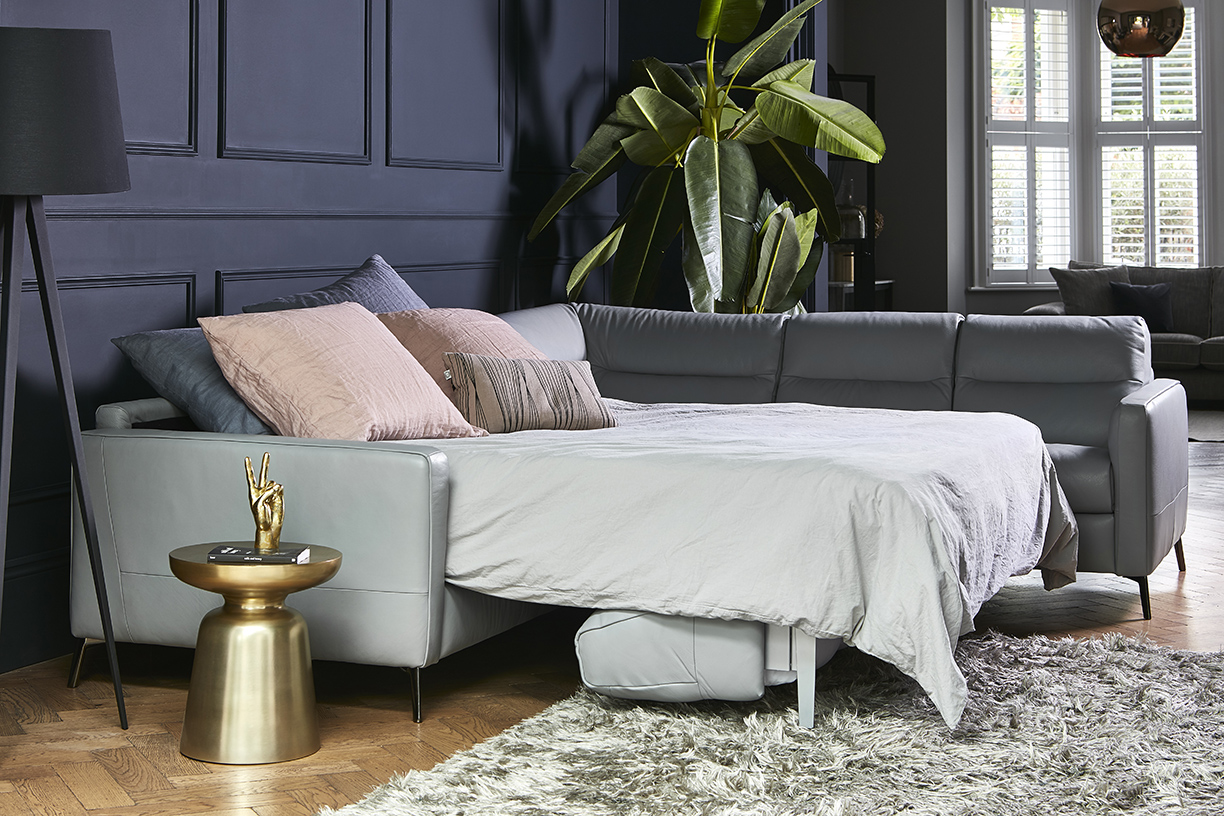
Photo courtesy of Darlings of Chelsea.
Maximize Space
Guest rooms are typically on the smaller side when it comes to the size and amount of space is available. For that reason, skip the queen-sized bed with minimal to no extra seating and go for a couch that can turn into a bed.
A traditional sofa bed will do or go more modern and purchase a futon that flips to a nice-sized bed.
Provide guests with nice sheets, pillows and blankets to make them feel more at home.
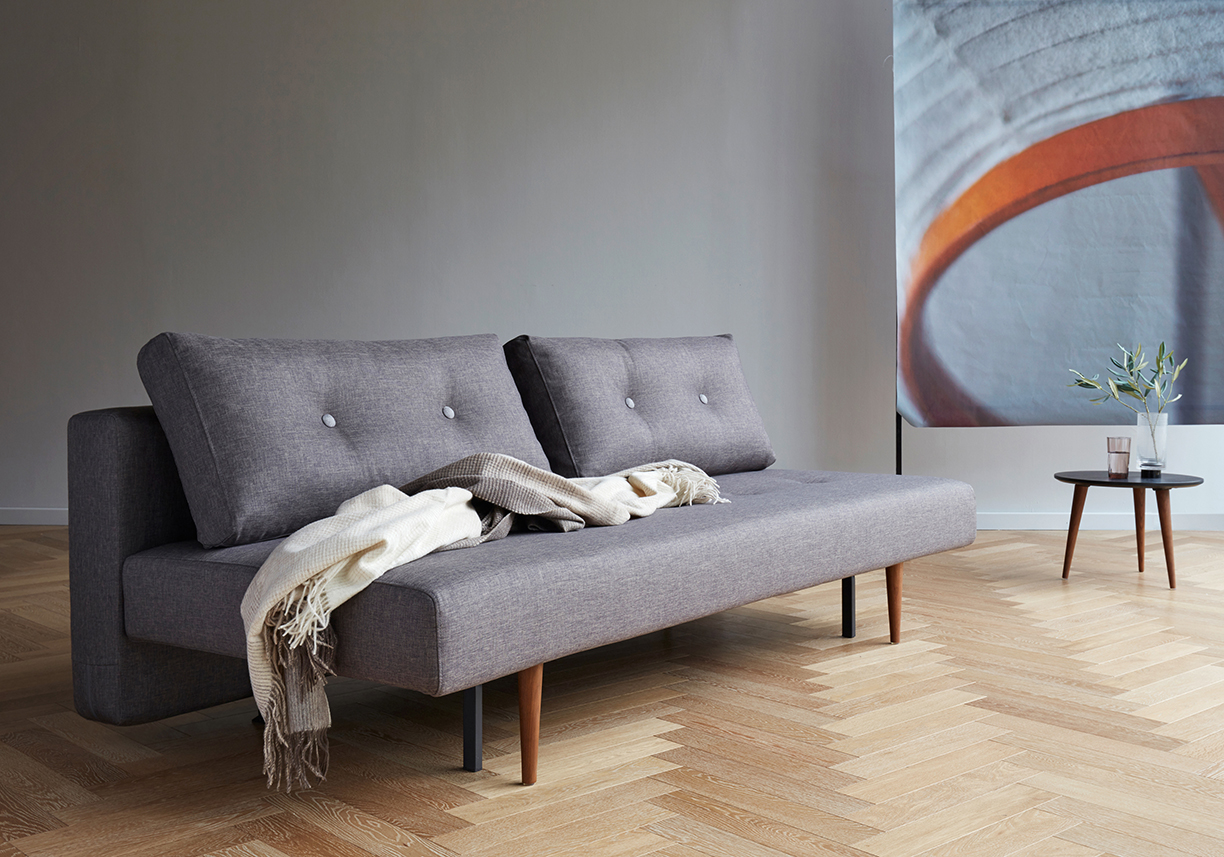
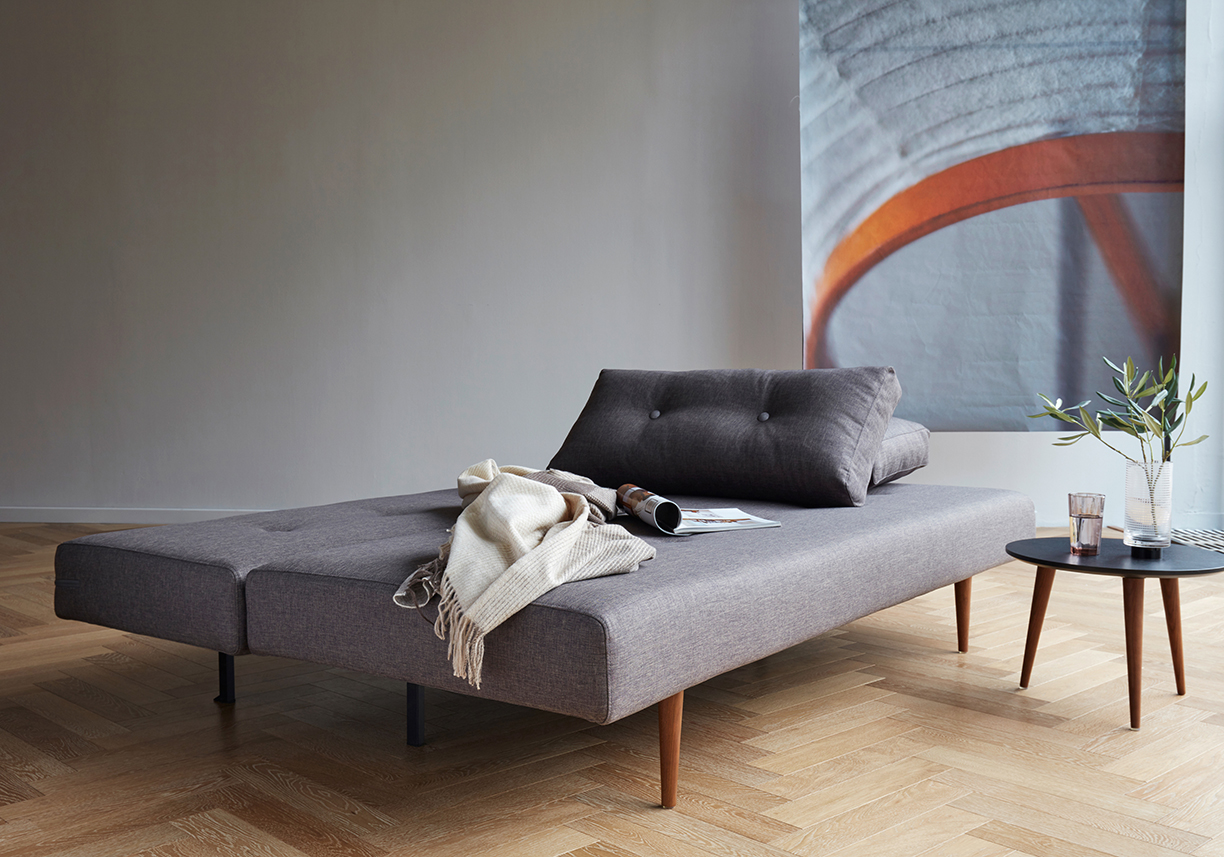
Photos courtesy of KSL LIVING.
Storage, Storage, Storage!
Living out of a suitcase is never fun. Whether people are staying for one night or 10, give guests enough storage space to organize their belongings. A dresser provides a good amount of drawers and the counter space allows people to keep track of smaller belongings.
Limited on space? A trunk at the foot of the bed or along the wall. The trunk allows for some extra seating as well.
Storage baskets are a great space-saver and can be tucked away under the bed or in a closet. Select some that have a pop of color or an interesting pattern.
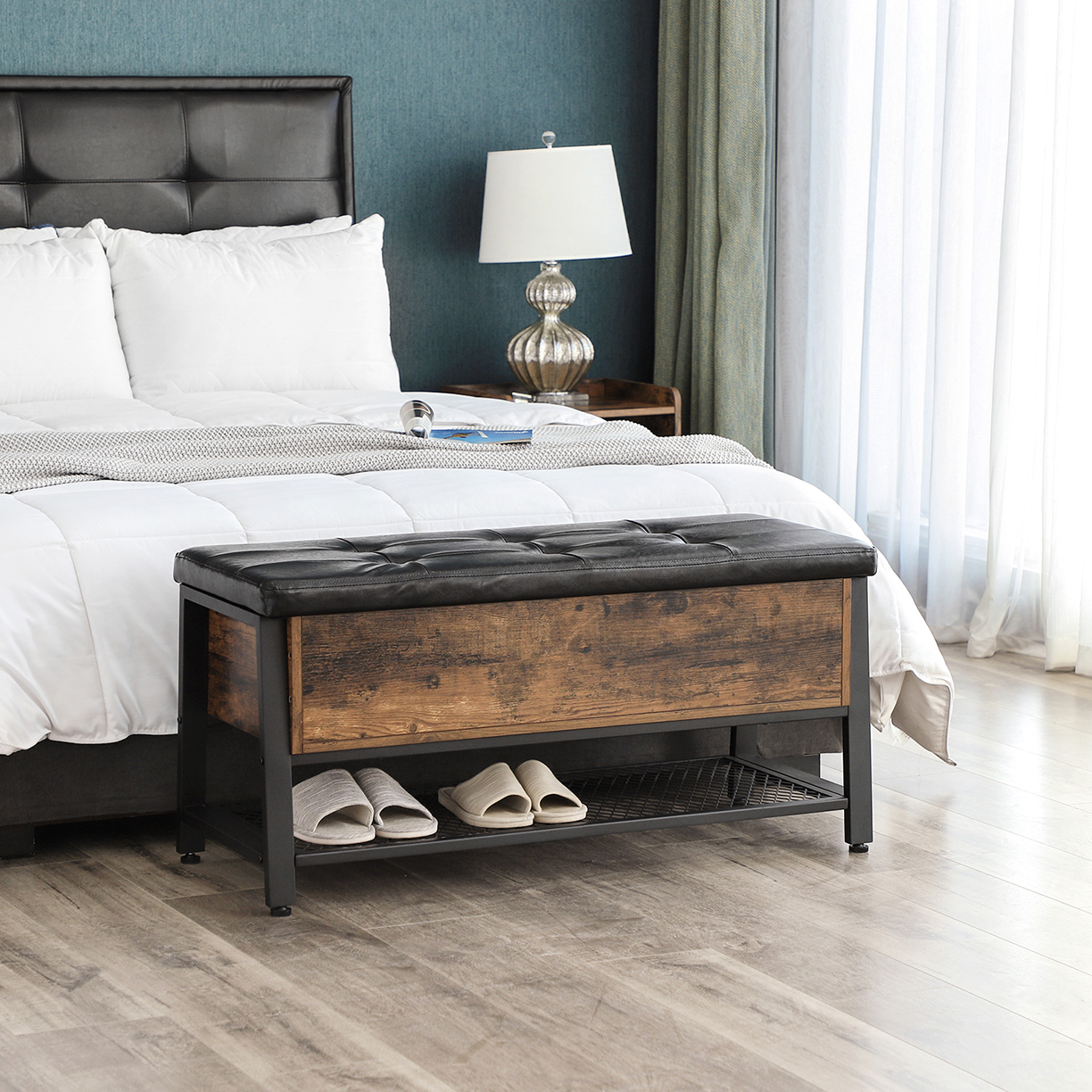
Photo courtesy of SONGMICS.
Mirror, Mirror on the Wall
A mirror is a must when it comes to upgrading the space. Not only do mirrors make smaller spaces appear bigger, but it is a nice feature to have for guests so they can get ready in the comfort of their own space. Sharing bathrooms becomes a hassle, but a full length mirror and a wall mirror give people the opportunity to prepare for the day or night in the room.
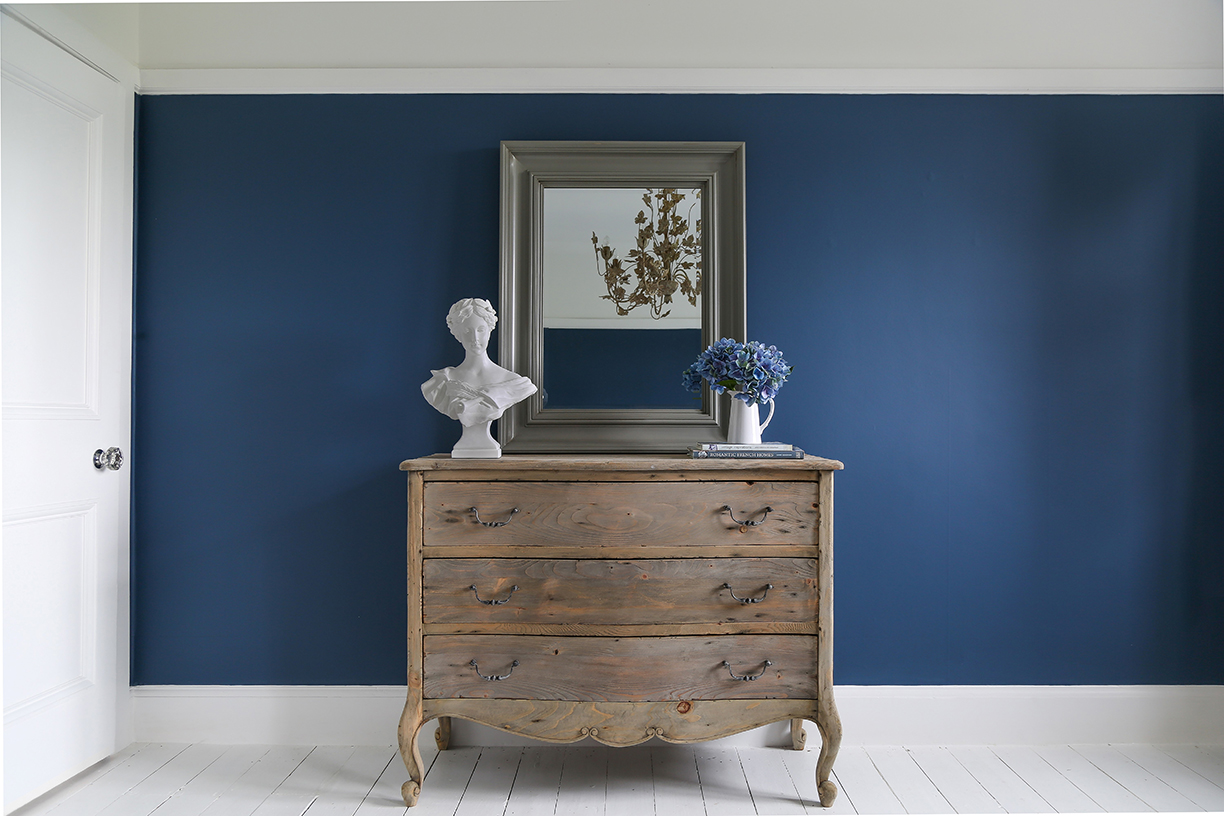
Photo courtesy of The French Bedroom Co.
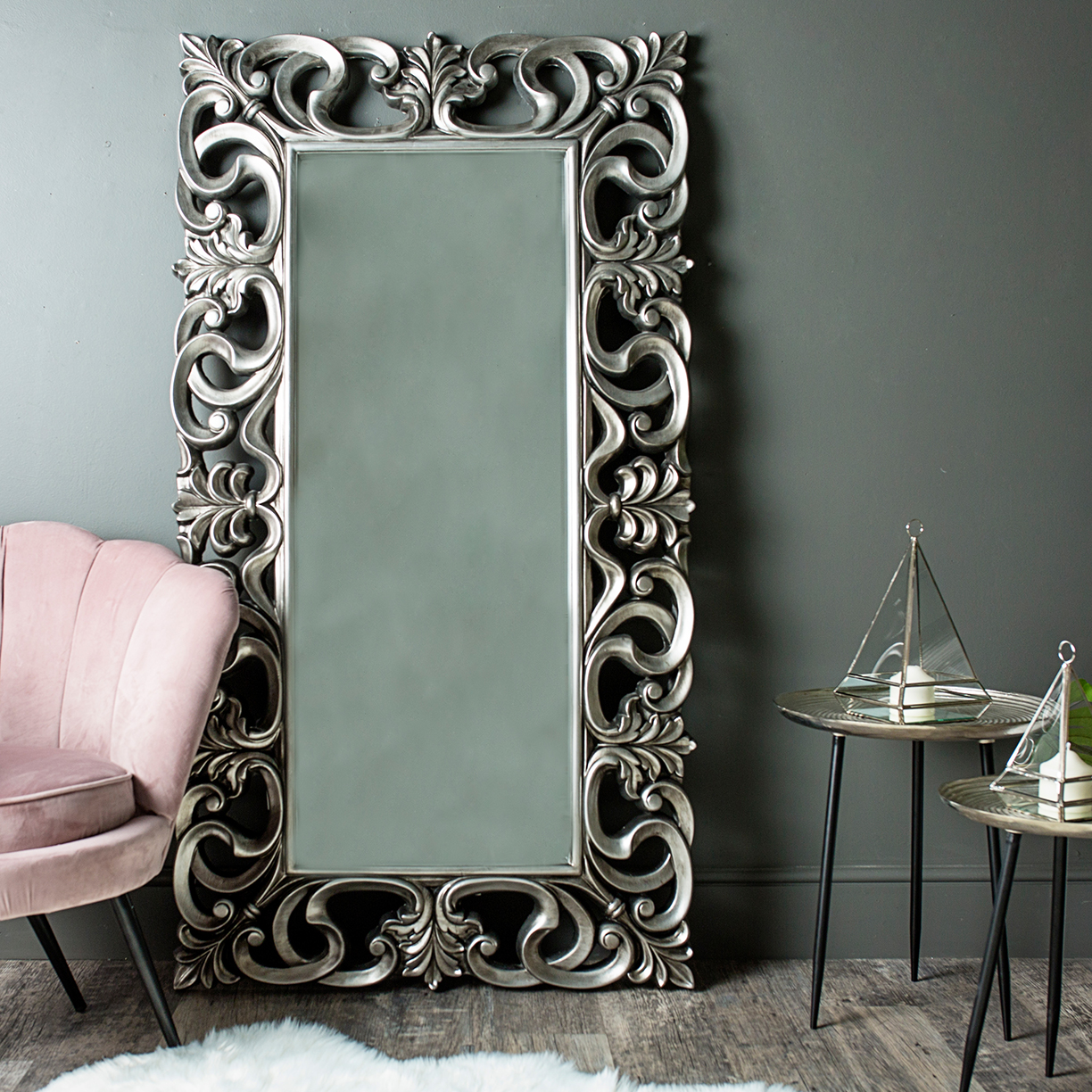
Photo courtesy of Melody Maison.
Light it Up
Don’t skimp on lighting and skip the boring choices. Have fun with the various selections that are out there and pick out some creative pieces that add to the room. Install a lamp that rotates so guests can read or choose lighting with different settings so your guests can determine how much light they want before they go to bed and when they slowly wake up.

Photo courtesy of KSL LIVING.
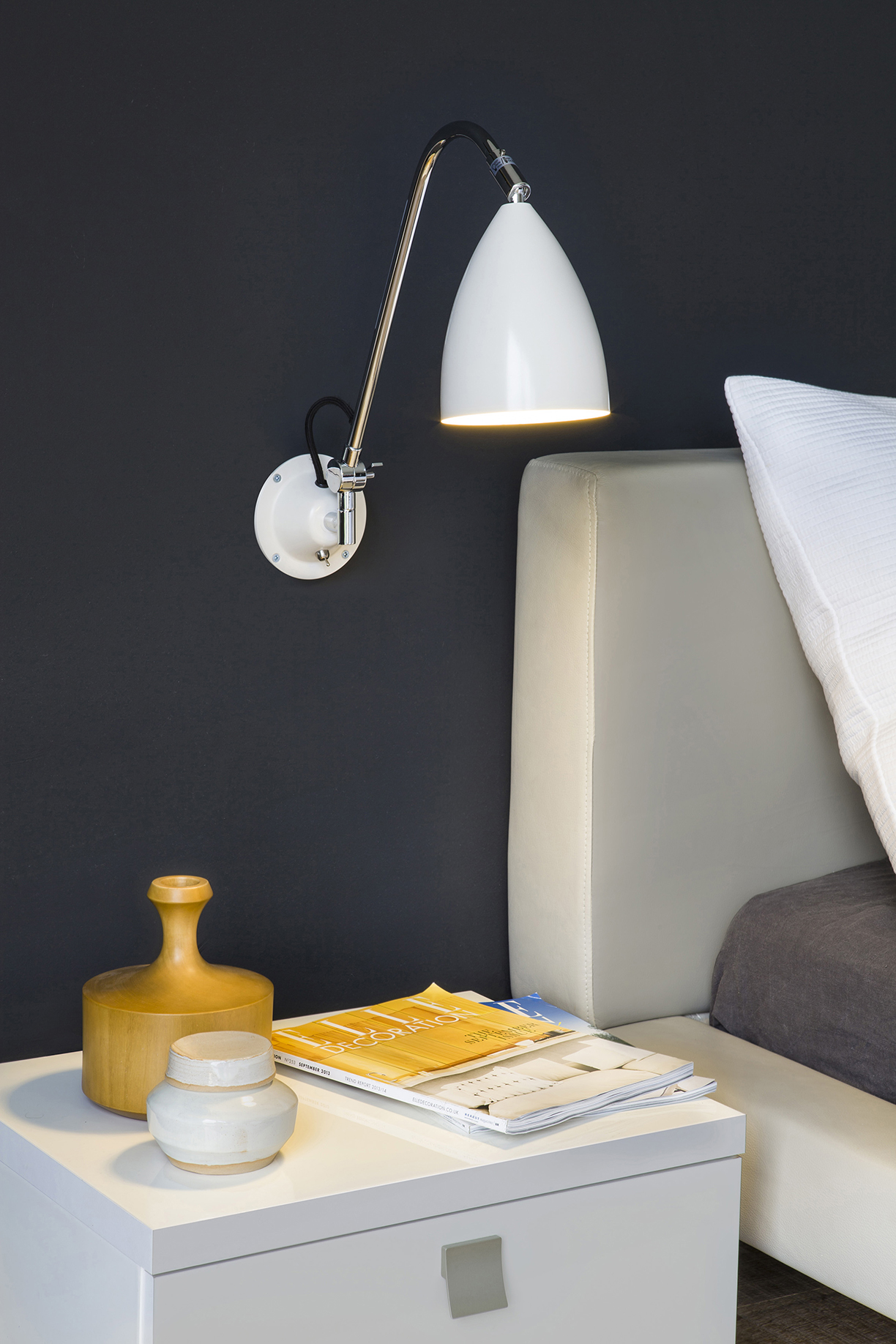
Photo courtesy of Astro Lighting.
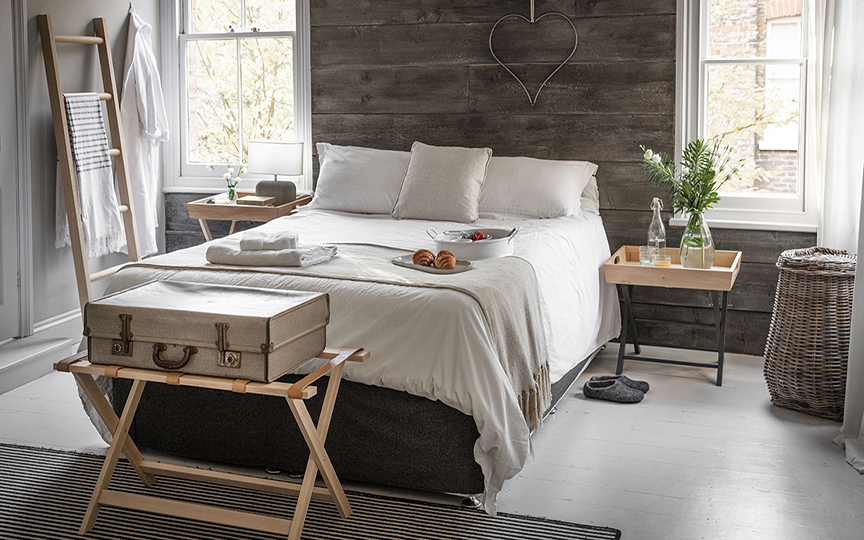
It’s the Little Things
Small details and amenities can give the guest room a Ritz-Carlton feel. Provide them with cozy slippers and magazine to read.
A breakfast tray or cart with some welcome treats, glassware or flowers makes the space welcoming.
Personalize the space with extra items for the people staying in the room, giving the space a warm touch.
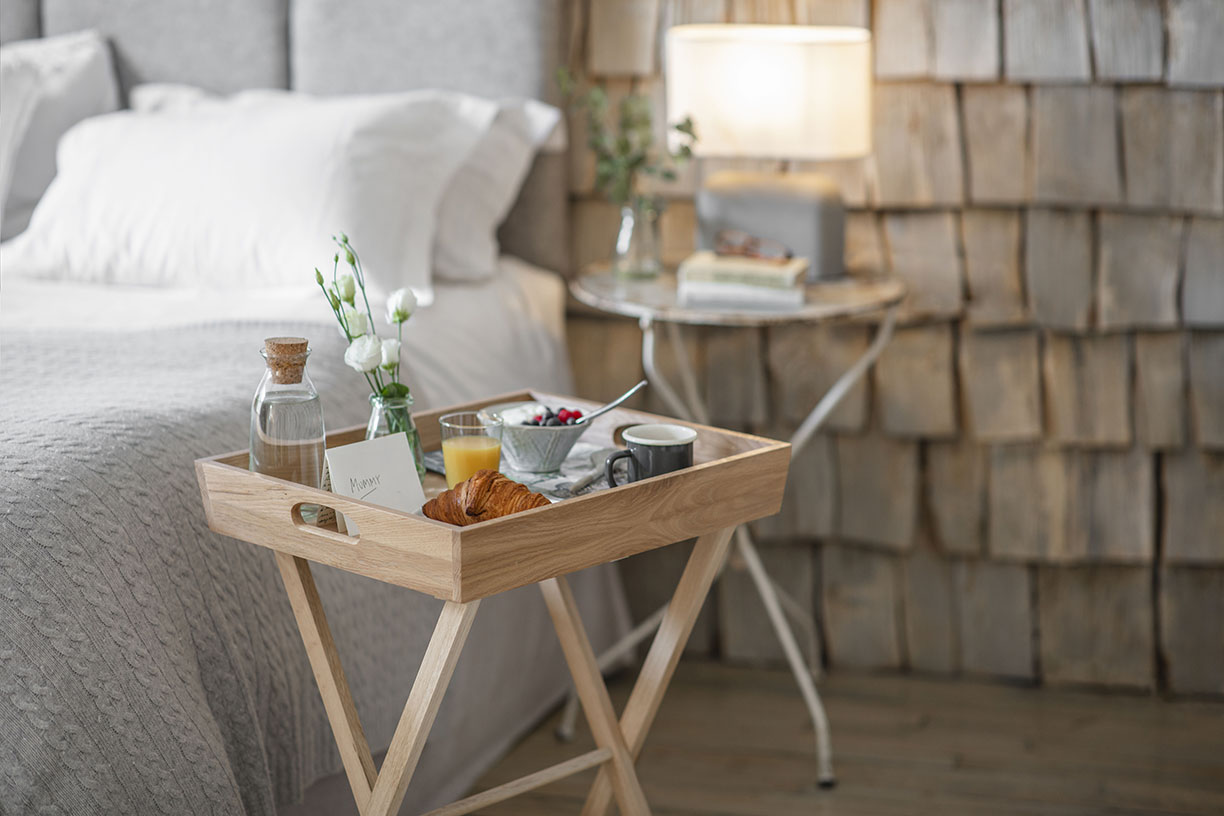
Above two images and featured image courtesy of Garden Trading.
After a period of declining popularity, home offices are back. Sort of.
Ask designers and architects about home offices and chances are the responses will range from “no one wants them” to “we’re including them in every house.” When it comes to home design headlines, it’s hard to compete with au pair suites and pet rooms, which tend to generate colorful images. Home offices might be humdrum, but they are gaining their share of the spotlight as more individuals spend some time working at home. And the more substantial the work, the more likely they are to look for a private office or work space.
Not too long ago, designers would have told you that home offices were passe as owners preferred to work in various spots around the house. Today, offices are back as a growing number of homeowners and potential buyers tick off a room to work at home, even a private office, on wish lists. The American Institute of Architects’ most recent home design trends survey shows offices as growing in importance, up to 39 percent from 33 percent a year ago. Interestingly, 58 percent of architects say interest in outdoor living, which tops the list of features growing in popularity, is increasing. Au pair/in law suites grew to 41 percent.
“A few years back we had a lot of homeowners requesting desk space in kitchens. We don’t get that as much anymore as people are looking for more private desk spaces that can be closed off from the rest of the house” says Sean Mullin AIA, director of design at Anthony Wilder Design Build in Cabin John, Maryland.“We’re adding office spaces in almost every house these days. I am working with a lot of empty nesters who are keeping additional bedrooms for future resale but converting one of them into a home office. They often want an isolated location for privacy with pocket doors or some other features to close off the room for privacy, while leaving the space otherwise open as a study or formal sitting room,” says Luke Olson, project manager at GTM Architects in Washington, D.C.
The 20-Hour Work Day
Today many jobs can’t be crammed into a single 8-hour time slot. Traffic and congestion also mean more individuals work at home at some point during the week. “With new technology making it easier than ever before to be in touch with people at any time of the day or night, it’s hardly surprising that workers are demanding that their increased efficiency is offset by great choice of location,” was a conclusion of a recent report from the International Workplace Group, which drew on insights from 18,000 professionals in 96 countries. And for a growing number of affluent individuals, including those opting to make their second homes a full-time residence, their base for work might be the home.

Instead of a completely dedicated individual space, many home offices today might start as a flex space or found space in an alcove, or even under a stairway.
©IStockphoto.com/MonkeyBusinessImages

Tall windows and sunlight make an inviting office in an alcove off a great room.
©IStockphoto.com/KatarzynaBialasiewicz
Among those who are not self-employed, the number of people who regularly work from home has grown by 140 percent since 2005, nearly 10-times faster than the rest of the workforce, according to The American Community Survey and GlobalWorkpalceAnlytics.com. The number of home-based self-employed grew by 7.3 percent from 2015 to 2016, with the number of home-based incorporated businesses increasing by 43 percent since 2005. The population that telecommutes at least one day a week grew by 11.7 percent from 2015 to 2016, the largest year-over-year growth since 2008.
Even though mega-companies such as Yahoo and Hewlett-Packard have moved away from telecommuting for some employees, approximately 40 percent more U.S. employers offered flexible workplace options than they did five years ago. Still many companies reserve the option for higher-echelon management. Only 7 percent make it available for most of their employees. The globalization of business is an additional catalyst. A number of the Fortune 1000 around the globe are revamping their space requirements, because many of their employees are already mobile. According to Global Workplace Analytics, they are not at their desk 50 percent to 60 percent of the time.
Home Office Demand
Spans All Price Points
While an office or study might be expected in high-end homes, even production builders are carving space for work at home into their plans across most, but not all price brackets. John Burns Consulting’s recent consumer insights survey shows that 16 percent of new-home shoppers work from home full time, and the number goes up to 53 percent for those who work from home one day a week. Shoppers with higher incomes and at higher purchase prices are more likely to work from home at least one day a week.
“This shift to working from home has shifted demand for floor plans and in-home office needs,” observes Jenni Lantz, manager of Design Lens for John Burns Real Estate Consulting.
“While some workers are comfortable just working from their laptop on their kitchen island or couch, many want something more significant. There is demand for formal offices (or at least informal) at all price points, says Lantz, noting only those with a very low purchase price are willing to negotiate on this space.
A high percentage of John Burns’ employees work from home, and everyone has the flexibility to work at home if the need arises, Lanz says, pointing to her own experience to illustrate how requirements for office space can change. “When I first started working from home, I had a desk located to the side of my family room. It was miserable. I had no privacy when the family was home, and it was hard to leave work behind for the day. When I bought my house back in 2014, I got a formal office, which made things so much easier. I have a separate formal office just off my foyer with French doors. This allows me to close the doors if needed, but I like the glass since it allows me to be still connected to the world outside if my daughter is home.”
Flex Spaces, Libraries and Niches
Instead of a completely dedicated individual space, many home offices today might start as a flex room or found space in an alcove, or even under a stairway. Home offices also might take the form of a space that can be configured as a workspace but also be repurposed to another function. Michigan architect Wayne Visbeen says he includes flex spaces in many of his designs, which can then be used as an office.
“People need to think about how they are going to use the space over the day and over the course of a lifetime. You want to make sure that space has the ability to morph over time,” shares Ann Thompson, senior vice president of architecture and design at Related Midwest.
In other instances, architects say they might include a private study that could be a set up as a formal office or a relaxed, but private, refuge. “In many instances we might make the dining room into a library, so it functions as a multiple purpose space,” explains Jim Rill, principal of an eponymous Washington, D.C. architectural firm. Dining rooms converted to a library might showcase a custom table that gives a place to spread out and play games while still available to host that once- or twice-a-year celebration.

“They are home management spaces, which are little niches that can be very charming, very functional, outfitted ergonomically with counters around and space for a printer.”
Photo by Morgan Howarth, Courtesy Anthony Wilder.

A small desk and a daybed ready a secondary bedroom for work or guests.
© Dustin Peck Photography Inc., Courtesy Mary Cook
The size and location of offices in the house may vary by potential use. “It does depend on the stage of life that you are in and it depends on the level of position that you have and the kind of job. But for sure, almost everybody is working from home in some capacity,” says Mary Cook, a principal of Mary Cook Associates, a Chicago-based design firm, noting the appeal spans generations and life stages from busy young moms to empty nesters. “So, I still say that you need a dedicated place, but that place is smaller, and it can now be flexible and adaptable.”
Many are more functional than in the past and often occupy less square footage. “They are smaller, usually 10-by-10, or 12-by-12, or they are home management spaces, which are little niches that can be very charming, very functional, outfitted ergonomically with counters around and space for a printer. We do a lot of those in back halls or off the kitchen,” explains Visbeen.
Putting the Home in Home Office
Other owners, say designers, want to make offices welcoming and warm. “Homeowners want the spaces to feel cozy. Incorporating a small gas fireplace or TV in the room will bring out the home in the home offices. Built-ins for books and plenty of windows for views will make it a space in which the homeowner will feel very comfortable working at home,” says Mullin, who explains some owners want a very simple space with just a desk while others might want a full set up with sofas, coffee tables and ottomans.


“Built-ins for books and plenty of windows for views will make it a space in which the homeowner will feel very comfortable working at home.”
Photos courtesy of GTM Architects.
Developers of new towers, whether for condo residences or luxury rentals, also take the desire for home offices into consideration for individual residences and for amenity spaces. Rather than traditional business centers, work areas may be found throughout amenity levels in some new buildings. And depending on the target demographic, they might take the form of community tables, booths, lofts, reading nooks, individual work stations and huddle rooms.
High-end condominium residences might include a library or study near the main gathering spaces as well as one in a secondary bedroom positioned away from distractions. And luxe work spaces such as these in new super towers might even offer panoramic vistas that surpass those in office buildings, giving new meaning to the phrase, view from the corner office.


